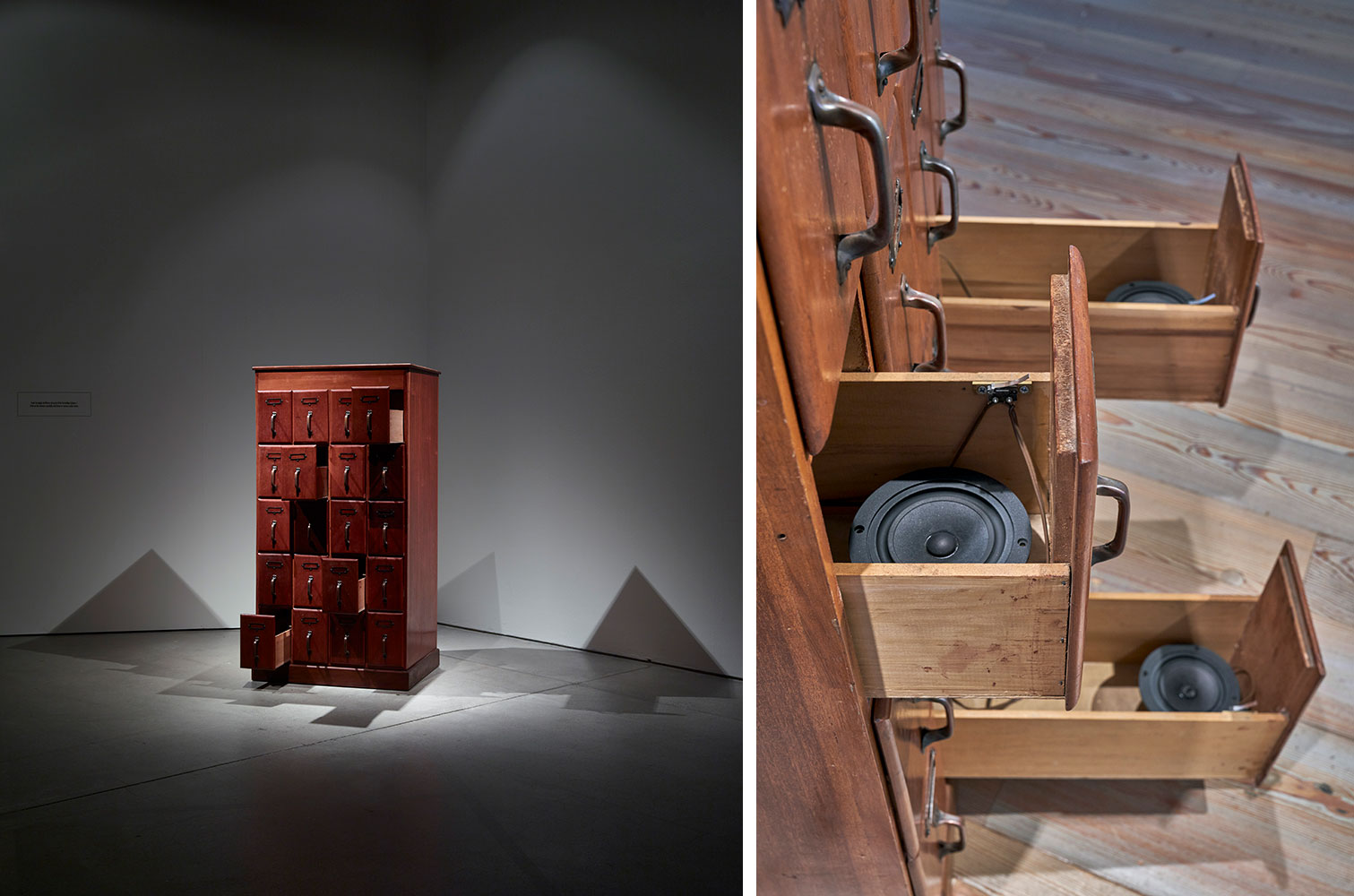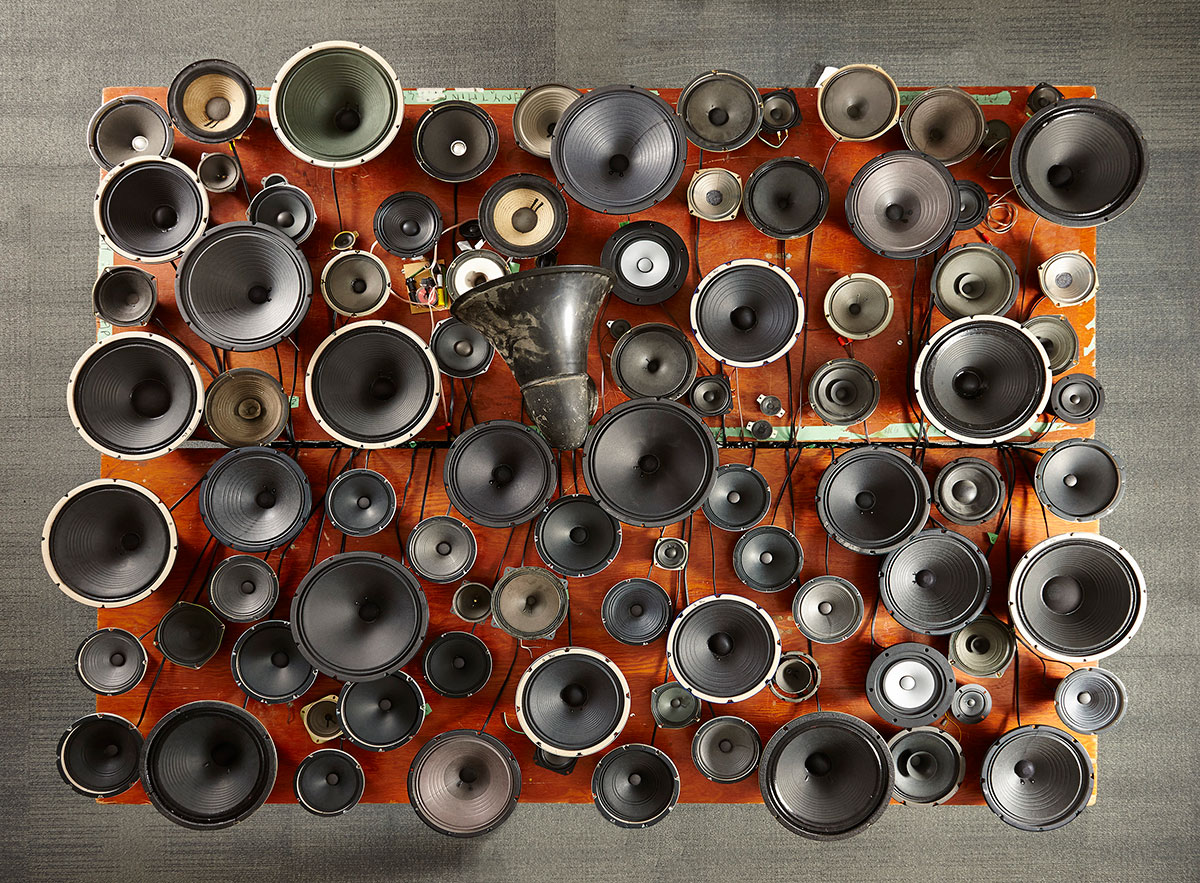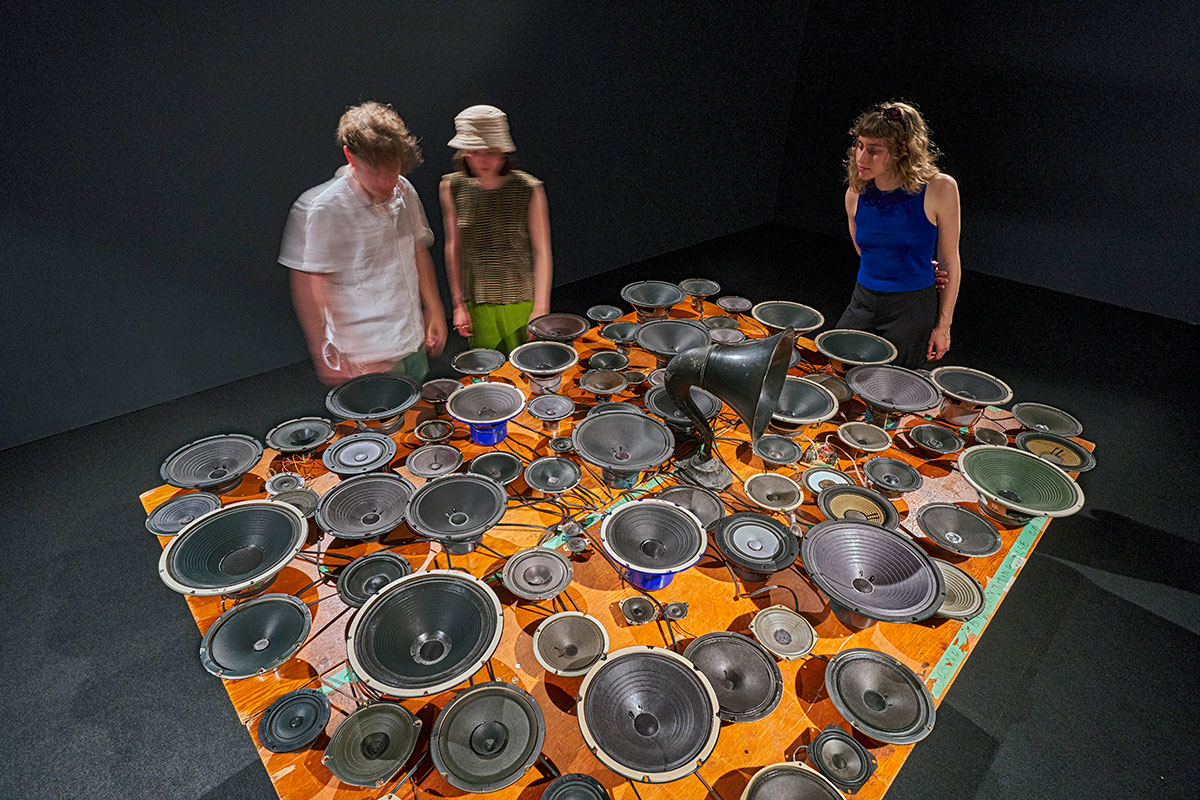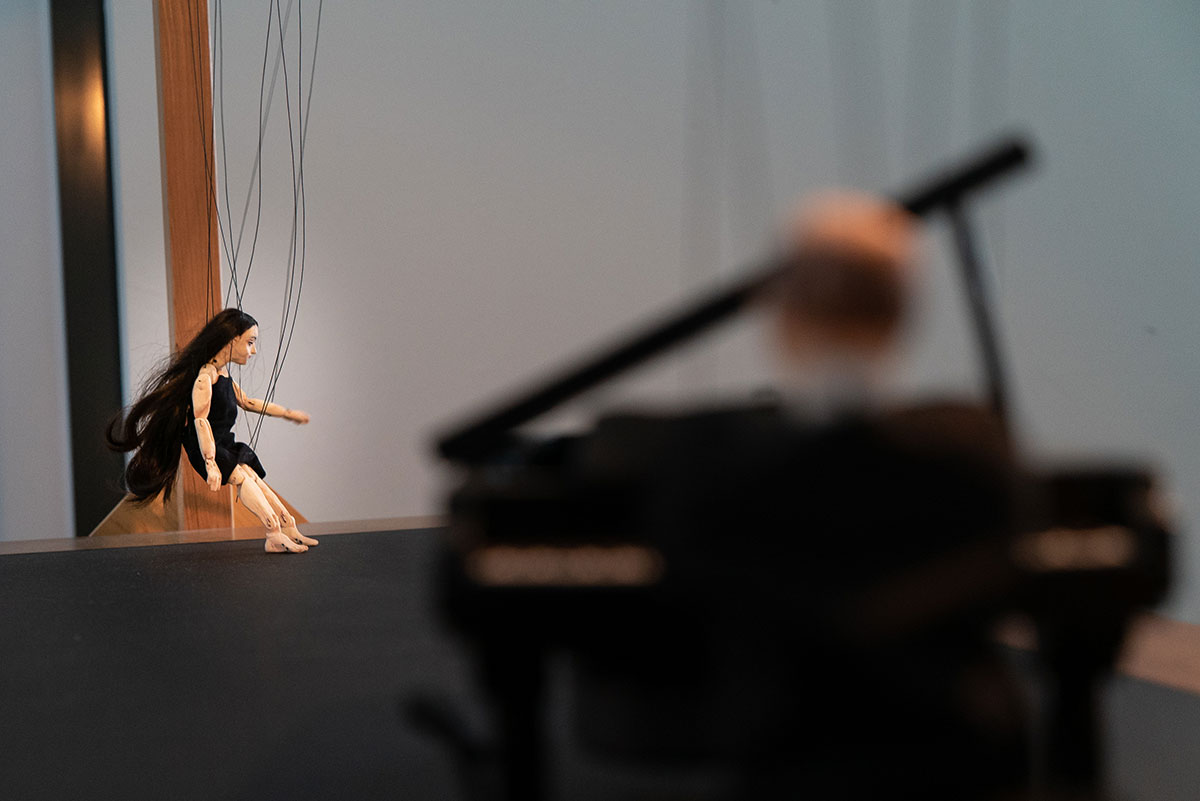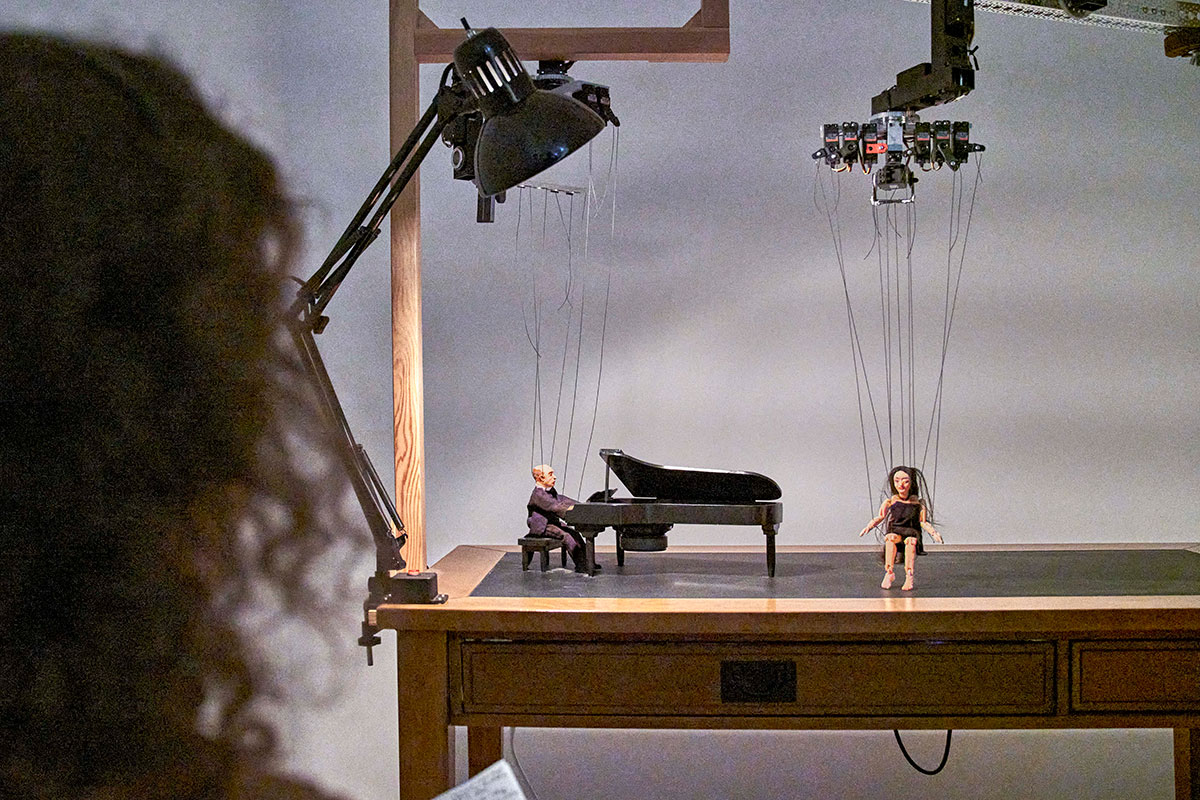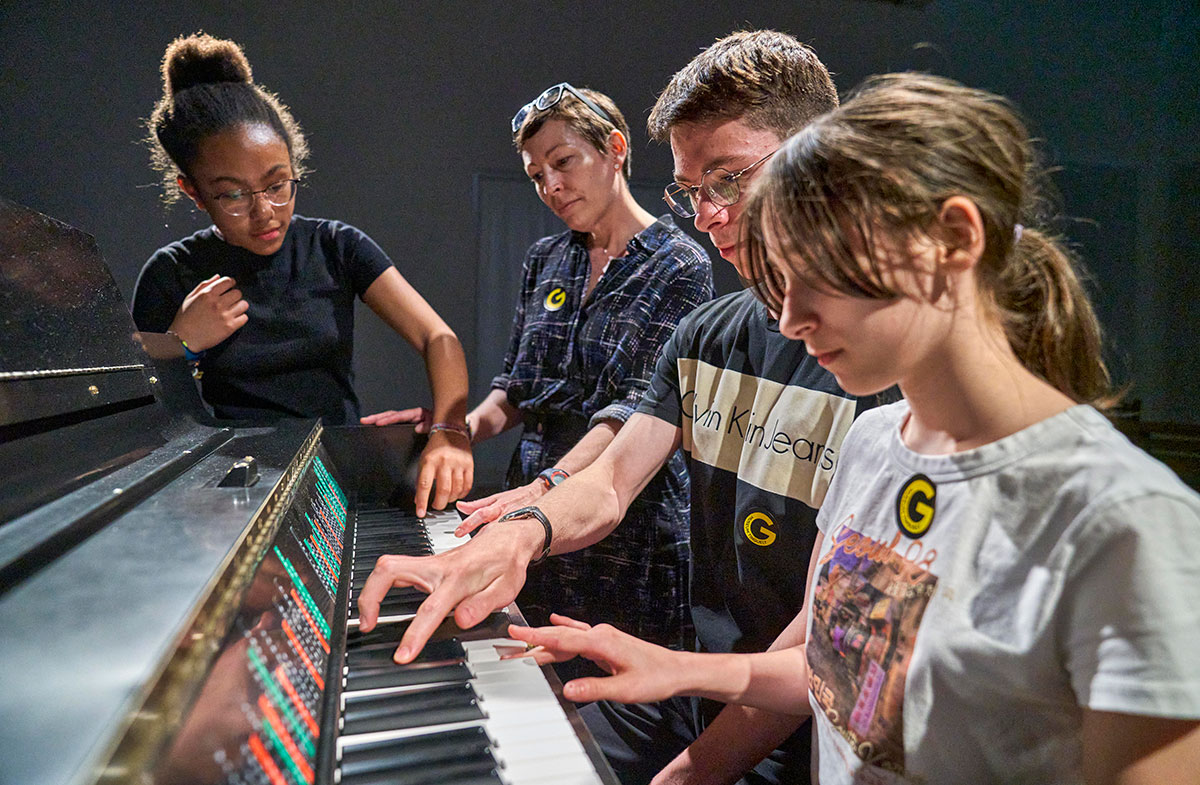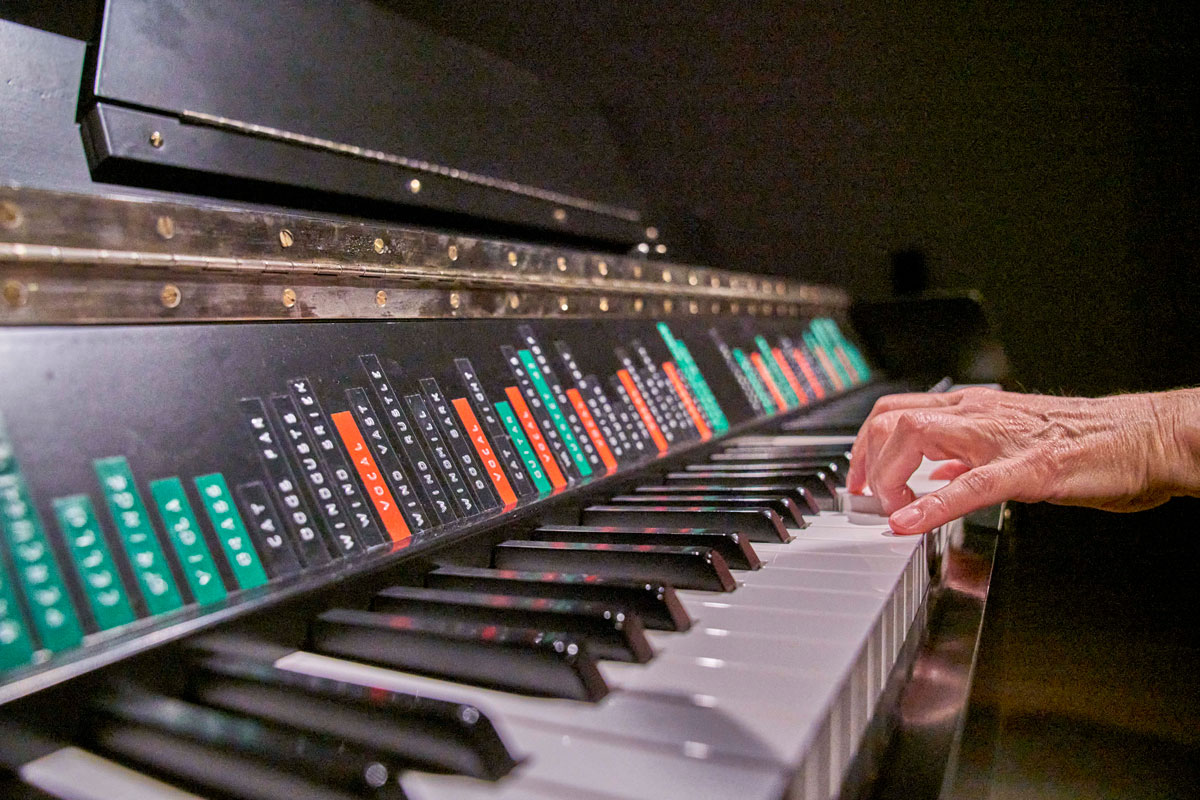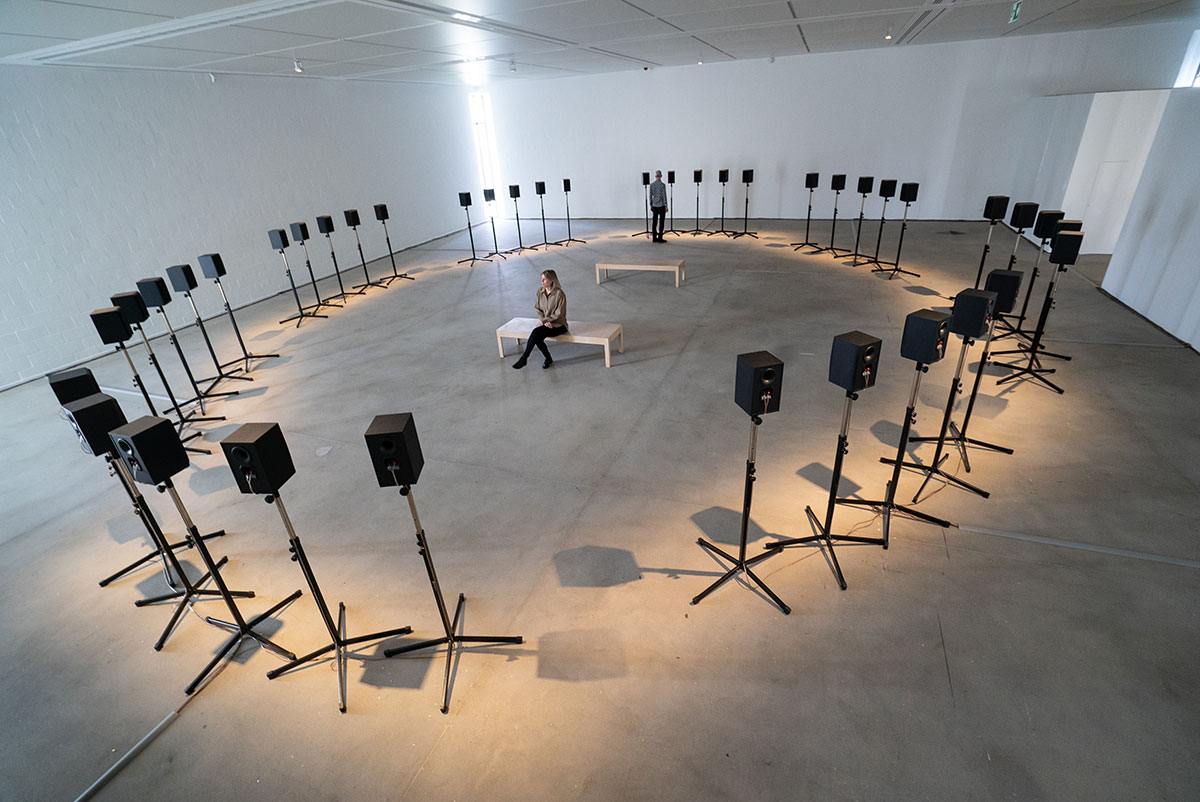PRESENTATION: Janet Cardiff & George Bures Miller-Dream Machines
 The work of the artistic duo: Janet Cardiff and George Bures Miller appeals to all the senses. Above all else, it probes and explores the sculptural plasticity of noise, sound, and music. The duo’s works are vehicles for individual excursions that combine a nostalgic fascination with the experiential worlds formerly afforded by cabinets of curiosity with the multimedia possibilities of the reality we inhabit today.
The work of the artistic duo: Janet Cardiff and George Bures Miller appeals to all the senses. Above all else, it probes and explores the sculptural plasticity of noise, sound, and music. The duo’s works are vehicles for individual excursions that combine a nostalgic fascination with the experiential worlds formerly afforded by cabinets of curiosity with the multimedia possibilities of the reality we inhabit today.
By Dimitris Lempesis
Photo: Museum Tinguely Archive
The exhibition “Dream Machines” offers a comprehensive overview of Cardiff & Miller’s work from their first interactive soundscapes to their sometimes dystopian, immersive, spatial installations of recent years, this is the first show in Switzerland to present a wide-ranging overview of the duo’s work, from their first interactive soundscapes to their most recent immersive – and dystopian – spatial installations. Their works are homages to cultural practices steeped in tradition such as cinema, theatre and live music-making. The artist duo launched their now over thirty-year-long career with binaural, on-site, walkman cassette ‘audiowalks’ before turning to CD’s and since 2000 using various video devices creating a simple form of augmented reality. These perambulatory works have been described as a type of interactive physical cinema. Like our sense of smell, our acoustic memory is an accurate, high-capacity storage and retrieval system, which influences our perception and which in its openness, corporeality, and associative capacity might even be superior to our visual memory. The artists take full advantage of the auditory creating a wonderfully unbounded, open-ended walk that interacts with the physical surroundings heightening all the senses but at the same time seems very much like a meditative trance. Cardiff and Miller have used various technical approaches to sound. Their first major musical installation, “The Forty Part Motet” (2001), pioneered the use of separate audio tracks, recording the voices of 40 individual singers, which were played back in unison. This work developed out of a famous piece of sacred choral music, Thomas Tallis’s motet “Spem in Alium” (around 1570) scored for eight five-part choirs. The forty loudspeakers are arranged in an oval, each speaker an individual singer, simulating a virtual choir where the movement of the voices around the space creates an almost physical sculptural experience. Visitors can deconstruct the composition by moving around the room, tuning into individual voices, or experiencing the totality of the composition. “To touch” (1993), “The Cabinet of Curiousness” (2010), and “Experiment in F# Minor” (2013) play with a different approach using movement-activated sound. The works are silent until the audience interacts with them. Here, these compositional works come alive as the visitors pull out a drawer from the cabinet or trigger sound effects, melodies, musical compositions, or whispering voices as they explore the tables. Cardiff & Miller’s creations are driven by their fascination with imaginative cultural practices such as writing and storytelling, film, performance and theatre, including puppet theatre, opera, and music generally. They work deliberately with the subconscious and with dreams that open up fantastical and often disruptive associative spaces. The “Instrument of Troubled Dreams” (2018), for example, provides the raw material for the audience to compose almost limitless compositions. The seventy-two keys of the original Mellotron, an analog proto-sampler, are in Cardiff Miller’s digital Mellotron attached to the most diverse ambisonic sounds and music ranging from raindrops hammering on a roof to an organ or choirs, from barking dogs to an exchange of gunshots. These can be combined or played in a certain sequence in order to create imaginary film soundtracks.
“The Muriel Lake Incident” (1999), meanwhile, transplants us into a miniature cinema, although the headphones provide more than just the soundtrack of the film being screened. The spatially acoustic (binaural) underpinning of crunching popcorn, rustling crisp bags, and whispering also gives us the auditory illusion of being part of a whole cinema audience. This blurring of narrative levels makes viewers themselves part of the action. Janet Cardiff and George Bures Miller have often remarked on their fascination with Tinguely’s seemingly autonomous machines and describe him as one of their most important influences. As Museum Tinguely does with its presentation of his works, they also provide a red button that visitors can press to set in motion the sinister spectacle of “The Killing Machine” (2007). Inspired by Franz Kafka’s short story “In der Strafkolonie” (1919), this work features two robot arms performing a grim ‘danse macabre’ that entails needling an imaginary victim trapped in a dentist’s chair. Another work, which is also started with a button, is the “Sad Waltz and the Dancer Who Couldn’t Dance” (2015). The female puppet’s movement is so intimate and anthropomorphic that when the aggressive controlling machine moves her in a clunky, disjointed dance, the viewer cannot help but feel empathy for her. Finally, spatial installations such as “Opera for a Small Room” (2005) or “Escape Room” (2021) enable visitors to flee reality altogether by literally entering Cardiff & Miller’s own worlds. Installed with painstaking attention to detail, these rooms give the impression that their inhabitants might return at any moment. They are brought to life by carefully staged sound and lighting effects that fire the imagination and remind us of longforgotten dreams. Another highlight off site is Janet Cardiff’s work “The Forty Part Motet” (2001), which can be experienced at first hand in the Druckereihalle of the Ackermannshof from 1 July to 10 September. This major musical installation pioneered the use of separate audio tracks, recording the voices of the individual singers which were played back in unison. It developed out of one of the finest choral works of Renaissance polyphony, Thomas Tallis’s motet “Spem in Altum” (ca 1570) scored for eight five-part choirs. The forty loudspeakers are arranged in an oval, each speaker an individual singer, simulating a virtual choir where the movement of the voices in space creates an almost physical, sculptural experience. Enabling the audience to pro-actively influence their auditory experience of this work presents an opportunity that no concert hall would ever offer. By moving around within the space and so changing their proximity to the various speakers, the audience can choose to concentrate on one particular voice or to appreciate the composition as a whole.
Photo: Janet Cardiff & George Bures Miller, Dreams – Telephone Series, 2008-10, © 2023 courtesy the artists, Luhring Augustine, New York, Gallery Koyanagi, Tokyo and Fraenkel Gallery, San Francisco, photo: Lamay Photo
Info: Curator: Roland Wetzel, Curatorial Assistant: Tabea Fanizzi, Museum Tinguely, Paul Sacher-Anlage 1, Basel, Switzerland, Duration: 7/6-24/9/2023, Days & Hours: Tue-Wed & Fri-Sun 11:00-18:00, Thu 11:00-21:00, www.tinguely.ch/
